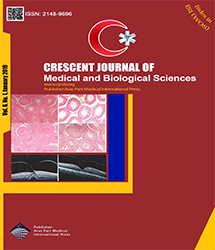| Original Article | |
| Comparison of Postoperative Topographic Changes Between 23G Transconjunctival Sutureless Vitrectomy and 20G Standard Transconjunctival Vitrectomy | |
| Mohamad Hosein Ahoor1, Rana Sorkhabi1, Amir Reza Pouraligholie Ipchi1, Zanyar Yousefi1 | |
| 1Department of Ophthalmology, Tabriz University of Medical Sciences, Tabriz, Iran | |
|
CJMB 2019; 6: 072-077 Viewed : 5881 times Downloaded : 3653 times. Keywords : 23G vitrectomy, 20G standard vitrectomy, Intraocular pressure, Cornea |
|
| Full Text(PDF) | Related Articles | |
| Abstract | |
Objectives: Transconjunctival sutureless vitrectomy (TSV) is a common procedure in eye surgery and is performed with needles 20, 23, and 25. This study compared the 2 methods of 20 and 23 in terms of various parameters. Materials and Methods: A total of 36 patients were admitted to Nikookari hospital, from which 18 patients were operated with the standard 20G vitrectomy and 18 patients with 23G TSV. Intraocular pressure (IOP), corneal anterior surface-based keratometry, corneal anterior surface-based curvature radius, and the corneal thinnest part thickness were evaluated before, a week after, and one month after the surgery. The results were compared through statistical methods using the SPSS software, version 22. Results: Based on the results, IOP, corneal anterior surface-based keratometry, corneal anterior surface-based curvature radius, and corneal thinnest part thickness had no significant difference between the 2 methods at different times (P > 0.05). However, IOP significantly reduced in the 20G standard vitrectomy one week after the surgery (P = 0.023). However, K1 and K2 in the 20G standard vitrectomy significantly increased one week after the surgery compared to the time before surgery (P < 0.05). In addition, the corneal thinnest part thickness in the 23G TSV significantly increased a week after the surgery compared to the period before the surgery (P = 0.007). Conclusions: In general, no statistically significant difference was observed between the 2 methods in terms of the studied parameters using one week and one month after the surgery. |
Cite By, Google Scholar
Google Scholar
PubMed
Online Submission System
 CJMB ENDNOTE ® Style
CJMB ENDNOTE ® Style
 Tutorials
Tutorials
 Publication Charge
Medical and Biological Research Center
About Journal
Publication Charge
Medical and Biological Research Center
About Journal
Aras Part Medical International Press Editor-in-Chief
Arash Khaki
Deputy Editor
Zafer Akan


















